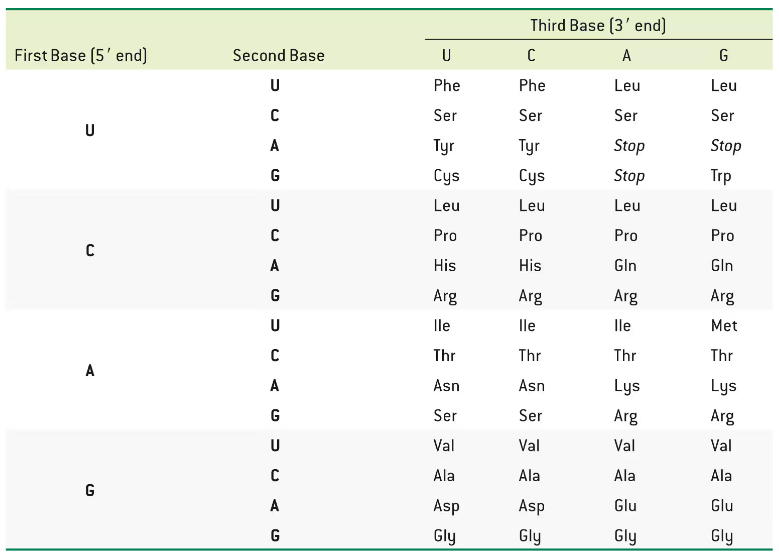Here are the essential concepts you must grasp in order to answer the question correctly.
Codons
Codons are sequences of three nucleotides in DNA or RNA that correspond to specific amino acids or stop signals during protein synthesis. Each codon is part of the genetic code, which translates the information encoded in genes into functional proteins. Understanding codons is essential for interpreting how genetic information is expressed in living organisms.
Recommended video:
The Genetic Code Concept 1
Amino Acids
Amino acids are organic compounds that serve as the building blocks of proteins. There are 20 standard amino acids, each with a unique side chain that determines its properties and role in protein structure and function. The sequence of amino acids in a protein is dictated by the corresponding codons in the mRNA, making it crucial to know which codons correspond to which amino acids.
Recommended video:
Amino Acid Catabolism: Amino Group Example 2
Genetic Code
The genetic code is a set of rules that defines how the sequence of nucleotides in DNA or RNA is translated into the amino acid sequence of proteins. It is universal among almost all organisms, consisting of 64 codons that specify 20 amino acids and stop signals. Familiarity with the genetic code is vital for understanding how genetic information is utilized in biological processes.
Recommended video:
The Genetic Code Concept 1

 Verified step by step guidance
Verified step by step guidance Verified video answer for a similar problem:
Verified video answer for a similar problem:



 3:25m
3:25m